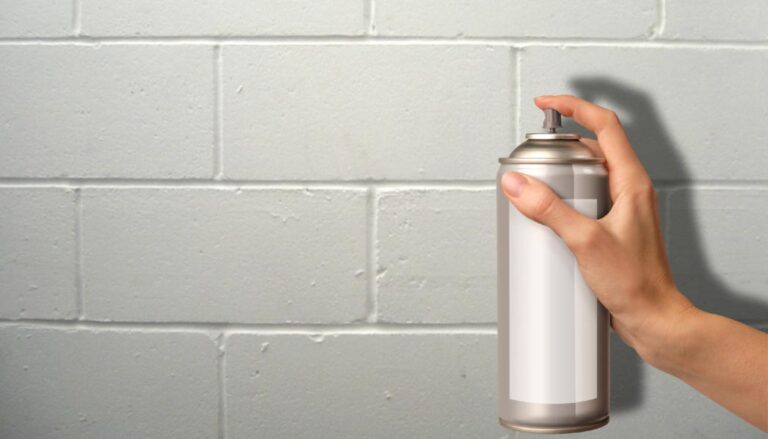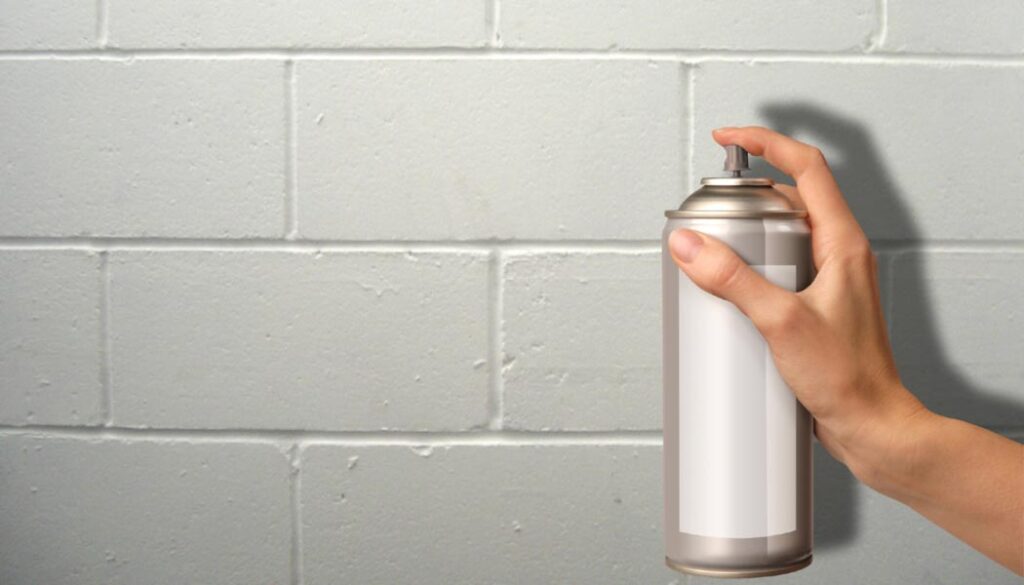
Can You Spray Paint over Clear Coat? [The Ultimate Guide]
Yes, it is possible to spray paint over clear coat. Clear coat serves as a protective layer on surfaces, providing a glossy and durable finish.
However, if you wish to change the color or add a design, spray painting over clear coat is a viable option. By following the proper preparation and application techniques, you can achieve excellent results.

In this comprehensive guide, we will delve into the steps involved, potential challenges, and expert tips to help you achieve a flawless finish when spray painting over clear coat. Revamp your vehicle, furniture, or other surfaces with stunning outcomes. Discover the secrets of this painting technique!
Can You Spray Paint over Clear Coat?
Spray painting over clear coat can be a great option for altering the appearance of a surface. However, you will need to consider several factors before proceeding. It’s important to understand the importance of conducting a test area and the potential risks involved.
1. Factors to Consider
Surface condition: Before spray painting over clear coat, assess the condition of the existing clear coat. If the clear coat is damaged, peeling, or showing signs of wear, it may not provide a suitable base for the new paint. In such cases, remove the coat completely before proceeding with spray painting.
Compatibility: Compatibility between the spray paint and the clear coat is essential to ensure proper adhesion and durability. Different types of clear coats, such as acrylic, urethane, or enamel, may react differently to various types of spray paints. It is advisable to seek professional advice to ensure compatibility between the products.
Preparation: Begin by thoroughly cleaning the surface to remove any dirt, debris, or contaminants. Sanding the clear coat lightly with fine-grit sandpaper can create a textured surface that promotes paint adhesion. Additionally, applying a primer specifically designed for adhesion can improve the bond between the clear coat and the spray paint.
Test Area: Conducting a small test area before proceeding with full-scale spray painting is highly recommended. This test area allows you to evaluate the compatibility of the spray paint with the clear coat. Apply the spray paint to a tiny portion of the surface by following proper techniques.
Observe the results over time. This test area helps mitigate potential risks.
2. Results and Risks
One common issue is poor adhesion, which can lead to paint peeling and cracking. This can occur if the clear coat is incompatible with the spray paint. It can also happen if the surface preparation is inadequate.
Another risk is paint failure, where the new paint may not adhere uniformly or may have an uneven finish. In some cases, the clear coat may react with the solvents in the spray paint, causing bubbling or other effects.
How to Spray Paint over Clear Coat?
Spray painting over a clear coat can be a bit tricky, but it is possible with the right preparation and technique. It’s important to approach the process carefully to ensure a smooth and professional-looking finish. Check this simple but effective step-by-step method for spray painting over clear coat.
Step 1: Prepare the surface
Make sure the surface is clean and free from dust. If necessary, wash the surface with soap and water and allow it to fully dry. If there are any rough spots, sand them lightly using fine-grit sandpaper to create a smooth surface.
Step 2: Mask off surrounding areas
If there are any areas nearby that you don’t want to be painted, use masking tape to cover them. This will help prevent overspray and ensure that the paint is applied only to the intended surface.
Step 3: Choose the right paint
Select a spray paint that is compatible with the clear coat you’re working with. Choose a high-quality paint that adheres well and provides good coverage. Consider the type of surface you’re painting and the desired finish (matte, glossy, etc.) when selecting the paint.
Step 4: Test spray
Before applying the paint directly onto the surface, it’s a good idea to do a test spray on a scrap piece of material. This will help you gauge the spray pattern, adjust the nozzle, and ensure that the color matches your expectations.
Step 5: Apply the paint
Hold the spray can about 8 to 12 inches away from the surface. Begin spraying with even strokes. Start from one side and work your way across. Avoid spraying too close or staying in one spot for too long, as this can cause the paint to create uneven patches.
Step 6: Allow for drying time
After you’ve applied the first coat of paint, ensure it dries. This typically takes 10 to 30 minutes. Make sure to follow the recommended drying time to achieve the desired result. If necessary, apply additional coats, allowing each coat to dry between applications.
Step 7: Final curing time
After you’ve completed the painting process, allow the surface to cure fully before handling or exposing it to any elements. This can take a few hours to a few days, depending on the specific paint and clear coat you used.
Can You Spray Paint over Clear Coat on Plastic?
Clear coats are typically used to protect the underlying surface, so painting directly over it may not yield the expected adhesion. To promote adhesion, applying a primer specifically designed for plastic surfaces is a good idea. The primer provides a suitable surface for the paint.
So, you can use spray paint over clear coat on plastic with some specific steps. You can follow this “How to Spray Paint over Clear Coat” written above.
However, spray painting on plastic’s clear coat provides some benefits and drawbacks as well.
Spray painting makes the plastic surface more resistant to scratches, fading, and environmental damage. It offers a convenient way to customize and personalize plastic objects according to your preferences. Spray painting is a relatively easy and accessible method for coating plastic surfaces.
Note: Clear coats are designed to provide a smooth surface, which may not always provide optimal adhesion for spray paint. If the clear coat is too smooth or has certain additives that prevent paint adhesion, the spray paint may not adhere properly.
Can You Spray Paint over a Clear Coat on Wood?
Yes, you can spray paint over a clear coat on wood. However, note that the durability of the spray paint may be affected by the condition of the clear coat. Proper surface preparation and selecting the appropriate spray paint can help ensure a successful outcome.
With attention to detail and care, you can achieve a satisfactory result.
Can You Spray Paint over Clear Coat Cabinets?
You can spray paint over clear coat cabinets. Clear coat cabinets are typically finished with a protective layer. Before proceeding with spray painting, ensure that the cabinet is in good condition, free from peeling or cracking. Otherwise, you may need to sand them to create a smooth surface.
When choosing a spray paint, opt for one that is fit for use on cabinets and provides good coverage. Apply multiple thin and even coats of spray paint, ensuring adequate drying time between each layer.
By following proper steps, you can successfully spray paint over clear coat cabinets. And finally you can achieve a refreshed and transformed look for your kitchen or living space.
Can You Spray Paint over Lacquer Car?
Spray painting over a lacquer car finish is possible. Lacquer is a type of automotive paint that provides a glossy finish. However, it can be prone to fading and cracking over time, which may necessitate repainting.
Before spraying paint over a lacquer car, confirm the lacquer is in good condition with no signs of damage. Additionally, using an automotive primer can improve the adhesion of the new paint.
Choosing the right paint for your car is important. Automotive spray paints come in various formulations, including acrylic, enamel, and urethane. Select a paint that is compatible with lacquer.
Can You Spray Paint over Clear Coat without Sanding?
Spray painting over clear coat without sanding is generally not recommended. Clear coat is a transparent layer. Over time, it can be damaged, requiring a fresh coat of paint.
Skipping the sanding step and apply new paint directly over the clear coat can lead to several issues. Sanding serves multiple purposes, such as creating a rough surface for the new paint, removing imperfections, and promoting better adhesion.
Without sanding, the new paint may struggle to bond properly to the smooth clear coat surface. The paint may peel, crack, or bubble over time.
To ensure a successful paint job, it is generally recommended to properly prepare the surface by sanding the clear coat. This creates microscopic grooves that allow the new paint to adhere securely, promoting a more professional-looking finish.
Important Video with Some Tips:
Final Thoughts
So, the verdict is clear. You can spray paint over a clear coat. While it may seem tempting to take shortcuts and spray paint directly over clear coat, it is best to follow the proper procedures for optimal results.
Remember, if you are unsure about the best approach or lack the necessary experience, you can take help from professional service.
